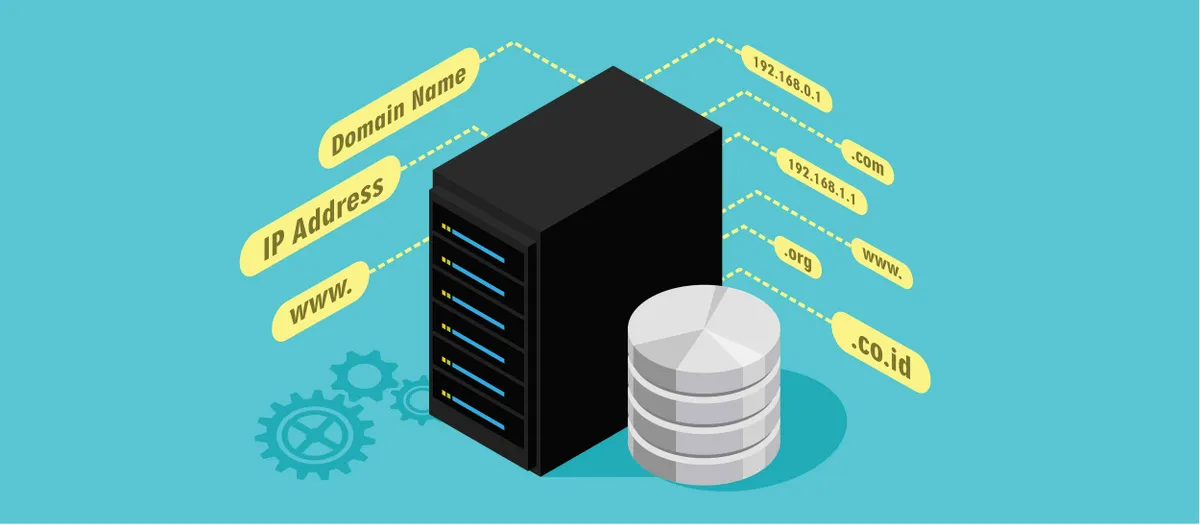
DOMAIN NAME SYSTEM -DNS
Greetings and welcome to an exciting adventure into the world of technology! Today, we’ll be exploring one of the most crucial components of the internet — the Domain Name System (DNS). Whether you’re a tech enthusiast or just curious about how the internet works, this topic is sure to be a treat. Get ready to dive into the intricacies of how the internet translates domain names into IP addresses and learn about the various types of DNS records. So buckle up, grab a notebook, and let’s get started!”
Domain Name System
DNS, or Domain Name System, is the telephone book of the internet. It translates human-readable domain names, like www.example.com, into numerical IP addresses (192.168.8.10) that computers can understand and use to communicate with each other.
Imagine you want to visit a website, but instead of typing in its URL, you only know the website’s name. You would look it up in the phone book (DNS) to find its corresponding telephone number (IP address). The same concept applies to accessing websites on the internet.
Imagine you want to visit your friend’s house, but you only know their name, not their address. You would look up their name in a phone book (like DNS) to find their address (like an IP address). This is what DNS does for the internet.
When you type a website name into your computer, it goes to a special helper (DNS) that knows the address of all the websites on the internet. It then gives your computer the right address, so you can visit the website you wanted to see.
Just like how a phone book can have many pages and be big, the internet has many websites and the DNS helps us find the right one. And, just like how a phone book can be updated with new information, the DNS can also be updated with new websites and their addresses.
So, DNS helps your computer find the right website on the internet, just like a phone book helps you find your friend’s house.
The Hierarchy
DNS is an essential part of the internet, as it allows us to access websites and other online services using human-readable domain names instead of having to remember numerical IP addresses. It also helps to distribute the workload of serving domain name information, making the internet more resilient and scalable.
Let’s say you want to visit a website, but instead of typing in its URL, you only know the website’s name. How do you find its address to visit it? This is where the hierarchy of DNS servers comes in:

- Root DNS Servers: The first step the resolver takes is to contact the root DNS servers. They are like the directors of all the DNS servers on the internet. They don’t have the address of the website you’re looking for, but they know where to find the information.
- Top-Level Domain (TLD) Servers: The root DNS servers then direct your computer (resolver) to the TLD servers. These servers hold information about different types of websites, such as .com, .org, and .edu.
- Authoritative DNS Servers: The TLD servers then direct your computer to the authoritative DNS servers. These are the experts who have the actual information about the website you’re looking for, including its IP address.
- Your Computer(resolver): Finally, the authoritative DNS servers send the website’s IP address back to your computer (resolver). Now your computer knows the address, and you can visit the website.
What Are DNS Records
DNS records are the individual pieces of information that make up a domain’s DNS information. They are information that maps domain names to IP addresses and other information, like email servers. They help web browsers find the correct website when a user types in a domain name, instead of the IP address.
DNS records are like a phone book for the internet. Imagine you want to call a friend named “John.” You look in the phone book and find John’s phone number. On the internet, it works the same way, but instead of names and phone numbers, it’s websites and IP addresses. So when you type a website name into your computer, the DNS record helps your computer find the right website by matching the name to its IP address, just like you would find John’s phone number in the phone book. Some common types of DNS records include:
- A (Address) Record: The A record maps a domain name to an IP address and is the most basic type of DNS record.
- AAA (Address) Record: The AAA record maps a domain name to an IP address version 6 (IPv6).
- MX (Mail Exchange) Record: The MX record specifies the mail server responsible for accepting email for a domain.
- CNAME (Canonical Name) Record: The CNAME record specifies an alias for a domain name, allowing multiple domain names to resolve to the same IP address.
- NS (Name Server) Record: The NS record specifies the authoritative DNS servers for a domain.
- TXT (Text) Record: The TXT record can be used to store any text-based information, such as SPF records used to help prevent email spoofing.
- SRV (Service) Record: The SRV record is used to specify the location of services, such as the location of a SIP or XMPP server.
- PTR (Pointer) Record: The PTR record is used for reverse DNS lookups and maps an IP address to a domain name.
These records are stored on DNS servers and updated by domain owners to control how their domain name is resolved on the internet.
Other DNS Concepts
- Domain Name System (DNS) Records: These are the individual pieces of information that make up a domain’s DNS information, such as its IP address, email server information, and domain name.
- DNS Zones: A DNS zone is a portion of the domain name space in the DNS that is managed by a single organization or administrator. Each zone contains a portion of the overall DNS namespace and includes all of the resource records for that portion of the namespace.
- Resource Records (RR): Resource Records are the individual records stored in a DNS zone. They contain information such as the IP address of a host, the location of mail servers, and domain aliases.
- DNS Propagation: This refers to the process by which changes made to a domain’s DNS information are distributed to DNS servers across the internet.
- Caching: This refers to the temporary storage of DNS information on local DNS servers, so that future lookups for the same information can be completed more quickly.
- Recursive and Iterative Queries: Recursive queries are used when a client wants a DNS server to locate the requested information and return it directly. Iterative queries are used when a client wants a DNS server to locate the requested information and return the best answer it has, but it does not return the final answer.
- DNS Spoofing: This is a type of attack where an attacker alters the information in the DNS, so that when a user tries to visit a website, they are redirected to a fake or malicious site instead.
- DNSSEC (DNS Security Extensions): DNSSEC is a set of security extensions for the DNS that help prevent DNS spoofing and other types of attacks.
These are just a few of the concepts related to DNS, and understanding them can help you have a better understanding of how the DNS works and how it helps you find websites on the internet.
And with that, we come to the end of our journey exploring the fascinating world of DNS! From the root servers to caching and records, we’ve learned how this powerful system helps us find websites and access information on the internet.
The next time you type a website address into your browser, remember the incredible process behind the scenes that makes it all possible. Until next time, farewell and keep exploring the wonders of technology!”


